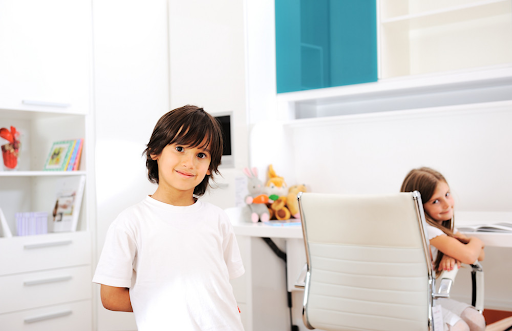
Redecorating your child’s room can be an exciting and fulfilling project. However, the thought of incurring exorbitant costs can deter many parents. Fortunately, there are several cost-effective strategies for giving your child’s room a fresh look without straining your budget.
1. Transforming the Walls
One of the most impactful ways to refresh a child’s room is by changing its color scheme. Painting the walls can dramatically change the overall vibe of the space. According to Forbes, when hiring a professional to paint, the average cost can range from $3 to $7 per square foot, so consider doing it yourself to save money.
If you choose to take on the painting project, invest some time in planning the colors that would best represent your child’s personality. A color palette that reflects their favorite hues will create a space that they love. Furthermore, opting for non-toxic and low-VOC paints will ensure a healthy environment for your home.
Don’t be afraid to explore creative options like wall decals or removable wallpaper. These options provide a fresh look without committing long-term and can be easily changed as your child grows. By adding elements that can adapt to their preferences, you ensure the room remains inviting for years to come.
2. Lighting Matters
Good lighting is essential in any room, especially for a child’s space where they will do activities like homework or crafts. Switching to LED lights is a great option for any home, as they are energy-efficient and can save parents money on electricity bills. According to Gitnux, these lights can consume up to 80% less energy compared to traditional incandescent bulbs.
Additionally, consider using a combination of ambient, task, and accent lighting. This layering of light can create a warm and inviting atmosphere for your child’s room, making it a comfortable space. Also, incorporating dimmers can help adjust the lighting for different activities and moods.
Involve your child in selecting fun fixtures that complement their room’s theme. Personalized touches, such as their favorite character lamps or nightlights, can make the space feel truly unique. It also encourages them to take ownership of their environment, fostering creativity and independence.
3. Flooring Options
The flooring of a child’s room plays a significant role in its overall feel and functionality. Many parents may consider carpeting because it provides warmth and comfort for little ones playing on the floor. According to Forbes, carpet flooring can last an average of 10 years with proper care, making it a long-term investment for your home.
However, if carpet isn’t the right choice for you, there are budget-friendly alternatives such as area rugs. They can add color and texture to the room without the commitment of full carpeting. Rugs are also easy to clean and can be replaced as your child’s tastes change over time.
When selecting flooring, consider the practicality and maintenance required. A durable option that can withstand everyday wear and tear is essential when redesigning a child’s space. Always prioritize safety and comfort, ensuring the flooring promotes both play and relaxation.
4. Creative Storage Solutions
As children grow, their items accumulate quickly, leading to cluttered spaces. Implementing effective storage solutions is essential for keeping a child’s room organized. Consider using multipurpose furniture, like ottomans with storage inside or beds with built-in drawers, to utilize space efficiently.
Wall shelves can also work wonders in maximizing vertical space while keeping toys and books within reach. With creative organization, you can transform what seems like chaos into a well-organized haven. This not only makes it easier for your child to locate their belongings but also teaches them valuable lessons about tidiness.
Involve your child in deciding on storage methods. Allow them to choose bins or boxes that match their style, making cleaning up feel less like a chore. Creating a personalized storage system will encourage them to maintain the organization of their room.
5. Personal Touches and Decor
Decorating a child’s room should reflect their individuality and interests. Personal touches can be made through art, photographs, or DIY projects that celebrate their personality. Encourage your child to participate by creating a gallery wall with their artwork or favorite photos, adding a sense of ownership to the space.
Consider using whimsical decorative elements like themed bedding or accessories that align with your child's interests. This can range from their favorite colors to beloved characters, which will make the room feel special to them. Frequent updates of decor based on changing tastes will keep the environment vibrant and engaging.
A room makeover is about creating a comfortable, inspiring space. With thoughtful planning, careful execution, and a little creativity, you can achieve a stunning transformation without breaking the bank. By fostering a nurturing environment, you're not just redecorating; you're building a sanctuary conducive to growth and imagination.


























